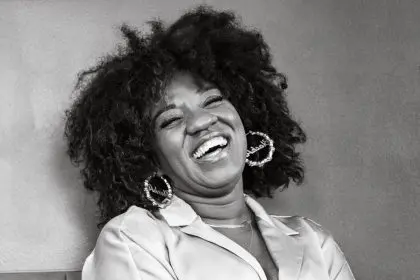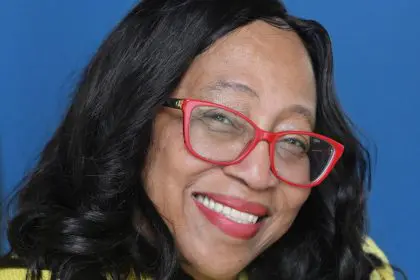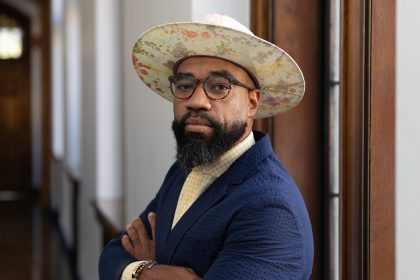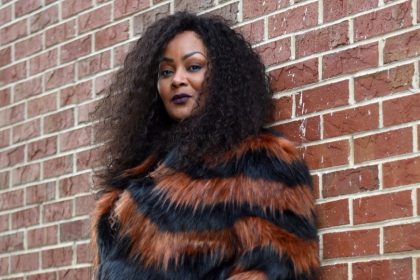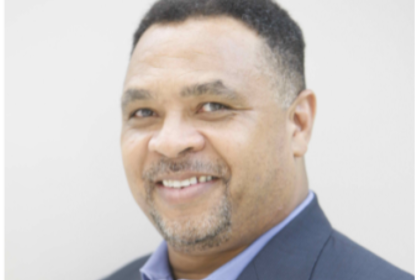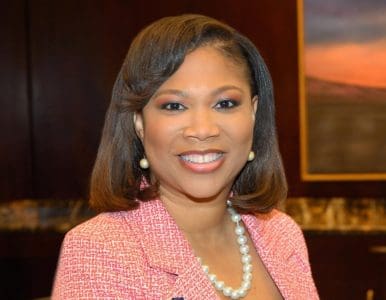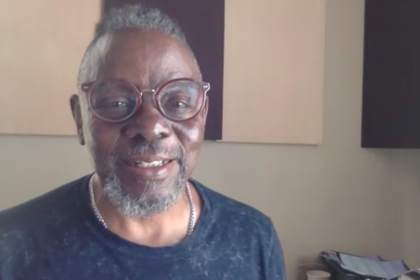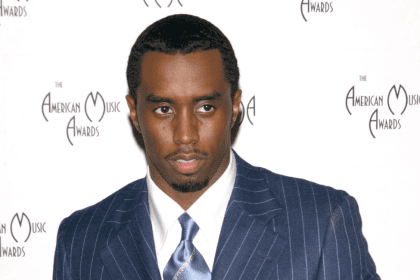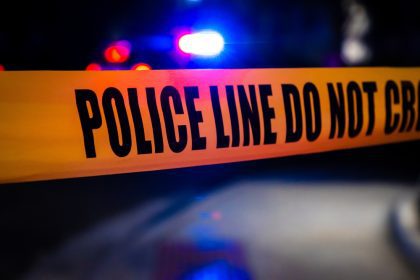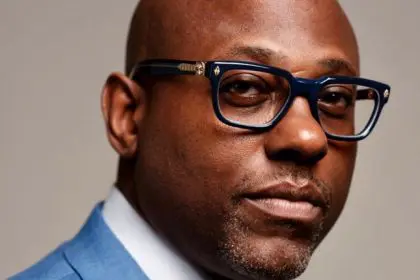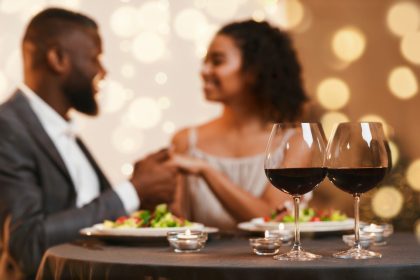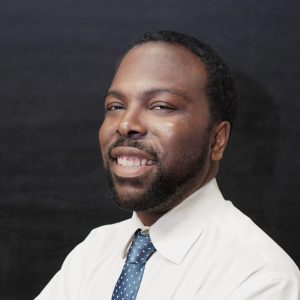Charles Henderson is the CEO of the American Diabetes Association. Henderson joined the ADA in January 2020 after spending more than 24 years in the for-profit sectors and volunteering in the nonprofit sector. He came to the ADA from Champion Life Safety Solutions, where he was CEO and president. Before that, he was a field sales executive running multibillion-dollar territories across the country for Dell Healthcare, Common Ground Marketing, and Viacom. His professional skill set and success, coupled with his passion and desire to give back, make this a perfect time to lead a nonprofit organization. He is passionate about spending the balance of his career in a space that will make a significant impact on the lives of millions across the country.
Why did you choose the challenge to be a part of the American Diabetes Association?
This cause is personal for me. Growing up, I lost my uncle and my grandmother to complications of diabetes, and if they would’ve had the education, awareness, and tools, I believe that it would have extended their lives. When I think about where we are in society, especially with the George Floyd situation, it shines a bright light on the inequities and disparities, not only in the world but specifically in the United States. It was something very easy that I couldn’t wrap my head around because it impacts so many people, so when we think about COVID, 40%, of the COVID deaths, those individuals had diabetes. That’s enough to get me so passionate about the cause and bend the curve, especially in underserved communities and people who look like us.
What is your mission as a CEO?
Our mission as a whole of ADA is to prevent, treat, and ultimately cure diabetes. What we want to do as one of the largest volunteer nonprofits in the world is to provide those who have diabetes with the tools and the awareness to better treat their disease to allow them to live productive lives. We want them to prevent them from getting diabetes. It’s about meeting people where they are in the community, providing educational tools, and resources, and getting into the community and educating them on lifestyle changes. How do we live better? How do we educate? It’s very important what we put into our bodies that leads to positive or negative outcomes in life.
What should people be thinking about when making food choices?
Growing up as a kid, before I got involved in the American Diabetes Association, my mom was a nurse. She’d say “Hey, you need to have more green things on your plate and more vegetables on your plate. When we think about one of the things that we’re doing at ADA now, we’re pushing legislation to try to change the dietary guidelines. The dietary guidelines were put in place in 1981, and most of those were for healthy people. When you think about 133 billion people living with diabetes today, half of our population has one or two chronic diseases. If you look at the triangle and the food pyramid, it doesn’t resonate. It’s not applicable today, and we need to change those dietary guidelines that can get people healthier because we aren’t healthy.
We also need to change the way we think. Sugar is addictive. Growing up in an underserved community, we didn’t have any grocery stores. My dad used to think it was a field trip. We used to drive 20 miles to get fresh produce and fresh vessels because it wasn’t available. Typically in underserved communities, there’s a fast-food restaurant on every corner. There’s a fast food store, there’s a grocery store, and there’s a donut place. That’s what you were conditioned to. As you get older, you realize that those things aren’t good. Those things don’t process well in the body. When you think about eating your spinach, eating your lettuce, eating your tomatoes, and cucumbers, those are the things that digest better, and they’re better for you in terms of it allowing your body to develop better over the long term, and then it creates good habits. I say, if you know better, you do better.
What are three critical skill sets that future executives need to know?
First, understand your audience. Understand the business, understand what levers to pull in the business, understand everything inside the business, and understand your P&L. Number two, be authentic and be yourself. Third, be very clear about your goals and where you want to take the organization. A fourth thing is you have to inspire. You have to be able to inspire people to move and do things.
Should young Black people be themselves in the workplace or blend in?
As African Americans, we’ve been conditioned to always assimilate right to everybody else. We are being told that we need to act a certain way or be a certain way. I’ve always been one just to be yourself, I’m talking to you just like I talk to anybody else. If you want to wear a T-shirt and a jacket to work every day, wear a T-shirt and a jacket, you don’t have to wear a tie. You don’t have to wear your hair a certain way. As long as you’re bringing value to the workplace, and you’re doing what you’re supposed to, just be yourself.
Why is it important for a CEO to set goals?
A part of our overall strategy at ADA is we’re about a $130 million enterprise right now, and I think we could be a $500 million enterprise in 10 years. There are several things that we need to get there. We need to make some strategic investments, we need to continue to add talent, we need to continue to build our recurring revenue streams. As an organization, we need to get more people involved. As an organization, one of our biggest things from an ADA standpoint that we haven’t taken advantage of is getting big federal grant money so that we’ll be able to deploy in the community. You also need need to be a visionary. You need to surround yourself with a good team. It’s not just one voice, it’s important to have a team on board so that they can push your message down so that your vision can become reality.
What are some of the values that you’ve been able to transfer from sports to working inside an organization?
I would say one is overcoming adversity. I had a tough coach while I played at Texas A&M, and it seemed like everything we did wasn’t good enough, but the older I did, I realized that he was just pushing us to be the best. There’s never a perfect basketball game or there’s never a perfect practice there. There are always things that we can work on to hone our craft. Number two is I’m about the team, you will never hear me say “I,” and that’s a superpower that I have. I’m always conscious about not saying “I.” It’s “we” and it takes a village you know. At ADA, when we have 133 million people counting on us every day, I’ve taken those early learnings throughout my childhood to our team and made those applicable to the daily run into this great organization.
Why is networking and building those relationships important to professional life?
My dad was a master networker, and I picked that up at an early age. From what I learned from a networking standpoint, and how it’s applicable is that you have to be intentional about relationships. You have to invest in relationships, and when you invest in those relationships, you shouldn’t expect anything in return. Calling people on their birthdays, asking them about their kids, sending them a text message, those types of things ingratiate yourself to people for the long term. What I would tell the young kids out there today is to be very intentional about building relationships. I’m 52 years old, and I always knew watching my dad that investing in relationships early could help. Some of my peers can work together, I could work for them, and vice versa. For me, it’s been all about being intentional and doing what you say you’re going to do.
What is the best way to recruit talent as a CEO?
To recruit the best talent on a team is really to evangelize what you’re doing. It’s one thing for me to go after good talent, but what I always do is bring in other team members or employees at the ADA to talk about their thoughts about where we’re headed whether it’s good, bad, or indifferent. From a talent perspective, and playing team sports my whole life, it’s one thing to have talent, but then you have to get all that talent to work together. I’m very careful about bringing in talent into the organization, because you could bring in talent, and it could be detrimental to what you’re trying to do. You have to be careful about bringing in talent. When I’m bringing in talent in the organization, I’m looking for talent, but I’m also looking at if they can work together.
Why is balance and taking a vacation a natural thing that needs to happen for CEOs?
I work an awful lot. I work several days a week, and it’s taken me a long time to understand that, but I tried to focus on making sure I had my rings in order, making sure I water myself, making sure I put God first, and making sure I put my family first. That’s been an evolution for me, but I can attribute all of my success to my family because of the sacrifices that they’ve made on my behalf. I owe it to them to not only bring my best self to work every day but also bring my best self to them and bring my best healthy self.
How do you process information as a CEO?
There’s a lot of information that comes at you. We make decisions based on KPIs, metrics, and analytics. We use some external partners to see where all the trends go into business, and what are the trends going from, from a nonprofit perspective, and then I have a head of strategy that drills down all that information and makes it into bite-sized pieces so that we can intelligently understand it, and making it make sense. How we message that information out, is in bite-sized pieces, so we have webinars, we have CEO series, and we have different subject matter experts within the ADA that talk about what’s going on from a nonprofit perspective.
What are three challenges that CEOs face?
I would say that the three challenges that CEOs face are they have to be able to move with speed because business moves at speed nowadays. Another challenge is keeping people motivated and interested. Whether it’s a mission, whether it’s the organization, I would say our attention spans are not what they used to be and so you have to do creative things to keep people engaged in the organization. Number three, I would say the challenges is distractions. As a media person, you always have distractions or misinformation. Keeping people focused on the right things that you’re doing as an organization is a big challenge. Anybody can put something in the ecosystem on Twitter, Facebook, or Instagram, and all of a sudden it spreads like wildfire, but at the end of the day, is that the truth?

